All About Longhaired Dachshunds
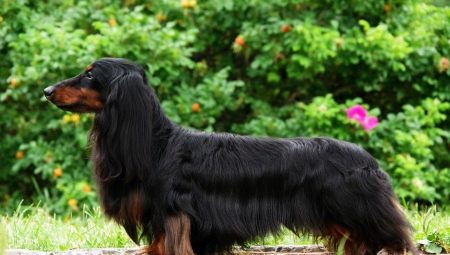
The dog has long been considered a true friend of man. For some people, it is customary to have dogs of large breeds, others prefer to have indoor dogs, others do not pay attention to the size of the animal, but perceive only the character and temperament of the pet. The only breed that unites the individual preferences of people is the Dachshund. These dogs can be called dwarf animals in appearance.
Thanks to their special endurance and musculature, they will be able to provide a forum for dogs of large breeds. And by temperament they are suitable for people with any lifestyle and interests, although most often dachshunds are acquired by hunters. Today, long-haired dachshunds are in high demand.
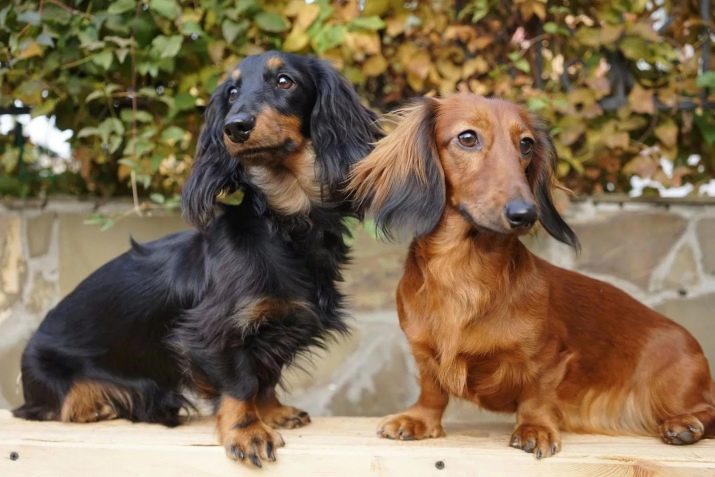
Origin story
The Dachshund is considered an ancient breed that gave rise to the emergence of other types of burrowing dogs. Only scientists have not been able to determine the exact date of the birth of the long-haired variety of dogs with an elongated body.However, multiple excavations indicate that the described breed of dogs lived in the territory of ancient Rome, Greece and Egypt. It was there that the skeletons of animals with an elongated body and short paws were found.
All breeds of dogs with a short stature and a long body have the same ancestor, namely the ancient hounds. Dachshund is no exception in this matter.
Although in that distant past, in relation to hounds, a long body was considered a disadvantage, rather than an advantageous factor. By the standard of the past, hounds were required to have long legs.
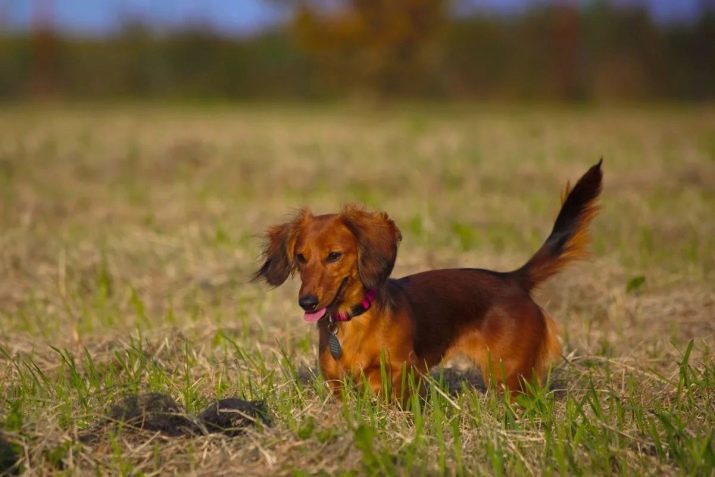
Short-footed representatives of dogs with an elongated body became popular after several hundred years and were used for hunting burrowing animals. For the first time, German hunters gave a positive assessment of the disproportionate body of dogs, after which the breeders began to work hard on the development of a squat breed. The official recognition of the Dachshund breed took place in 1988, after which the breeders began to actively engage in their breeding and the subsequent distribution of puppies.
This fact played an important role in the formation of other subspecies of the Dachshund breed. In simple terms, the long-haired variety arose by crossing the classic dachshund with a spaniel, and the long-haired rabbit was born by mating a dwarf dachshund with a pinscher and a toy terrier. Along with other breeds in the history of dachshunds, there are several special dates that every shortfoot breeder should know.
- XVI-XVII centuries The formation period of the Dachshund breed in Germany. The Germans paid special attention to breeding short-legged and stunted dogs, which make it easier to hunt wild animals living in burrows.
- XVIII century It was at this time that the hatched breed and its subspecies acquired their final appearance and characteristics.
- 1939-1945 During these periods of time, the demand and popularity of the Dachshund breed sharply decreases, as the world community has negative emotions about everything related to Germany. And only thanks to the special efforts of dedicated breeders, dachshunds after a short period of time re-win the sympathy of the public.
- 1972 year It was then that the XX Summer Olympic Games were held, the mascot of which was a dachshund named Waldi. The popularity of this dog had no limit. Her image in a striped T-shirt was placed on envelopes, clothes and dishes.
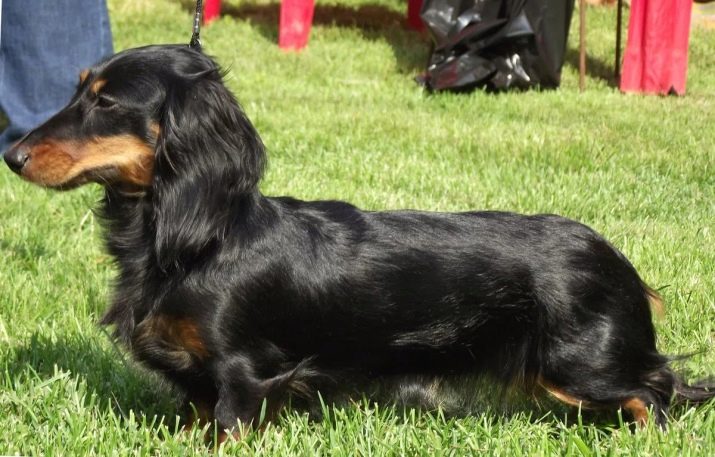
Description
Along with other purebred dogs, long-haired dachshunds have an official standard of appearance. Even a minimal deviation from the norm can indicate culling. The maximum height of an adult dog at the withers does not exceed 35 cm. The standard weight of an adult is around 9 kg. The molting of the long-haired variety of dachshunds proceeds according to the season, the process of hair loss itself is moderate and does not bring trouble to the breeder.
Representatives of long-haired dachshunds have different color variations. They can be one-color, two-color and spotted. The coat itself is long, falling down, rather thick. A distinctive feature of the breed is a dense undercoat that warms the animal in winter. The head of a dachshund has an oblong shape with oval transitions, tapering smoothly and evenly towards the tip of the nose.
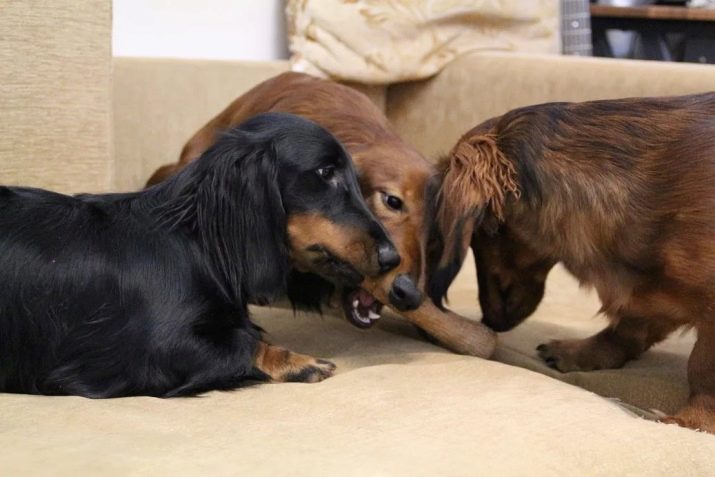
Ears set high to the touch are very soft, rather long. Breeders note their high mobility. The body of the dachshund should be smooth and slightly muscular. According to the norms of body structure, the chest region of the dachshund should protrude slightly. The belly is tucked up. Harmoniously folded limbs of a miniature body should be muscular and bone-like. The tail is located in the upper part of the body, slightly curving at the tip.

The dachshund is distinguished by a moderately long body, slightly stocky and compact in size. Its excellent musculature allows it to develop good speed and endure long journeys on its feet.Despite such a short stature, animals do not experience a feeling of discomfort and difficulty during movement. Against, dogs show perfect control over their bodies, are able to overcome the most difficult obstacles.
A distinctive feature of the dachshund is its strong claws., thanks to which they can easily dig up the ground. For a minute of hard work, a fluffy animal can dig a hole 45 cm deep.
Initially, shaggy puppies were bred for hunters, but now these animals have gained popularity among "dog lovers" with other interests. The long-haired variety is quite common at pedigree dog shows.
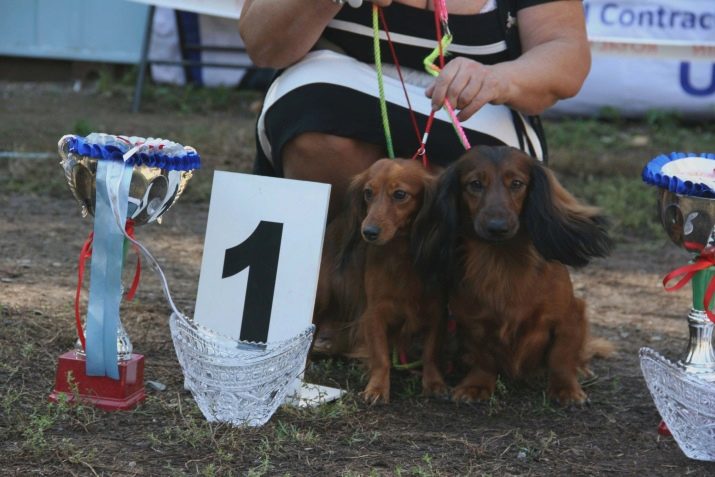
Character
Long-haired dachshunds have a soft, gentle and friendly disposition. In general, they are considered intelligent animals, quite energetic, flexible, gambling masters of the hunting art. Their main weapons are charm, persistence and stubbornness. Some members of the long-haired species tend to dominate and may show increased selfishness. At the same time, dachshunds are very curious creatures. That is why they try to get to know the world around them, in spite of any obstacles.
Dachshunds, by their very nature, are very attached to the owner and his family. But they try to avoid strangers. The knees of their owner are preferred as an ideal place to relax. If a person is lying, they fit on his neck. And at night they must crawl under the covers. It is very important from birth to teach dachshund puppies to society. This is especially true for other dogs, other pets and children. If you do not deal with this issue, its hunting instinct can prevail over the dachshund.
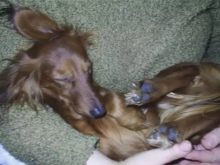
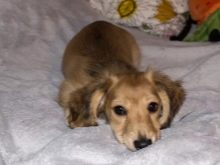
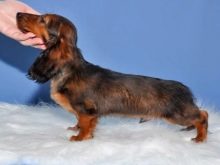
Like other small breeds dachshunds can be harsh and wary of large dogs... And in the case when big dogs respond to aggression, small animals often hide at the feet of their owner. Dachshunds live as comfortably as possible in large and friendly families who love active rest. Only for a full understanding and maximum adaptation is it necessary to have a puppy of two or three months of age.
At this age, the baby is much easier to accustom to society, and on a par with that to educate in all family members a sense of respect for the animal, especially for children. If the child is harsh and cruel towards the dachshund, she can show aggression.
Some owners of long-haired dachshunds claim that these animals can replace a professional psychotherapist. They are attentive listeners and sensitive to their master. It is easy to distinguish the mood of people, and in the absence of positive, they try to cheer. Although sometimes they can overdo it and even start biting in a playful way.
If the dog is purchased for living in a private house, the owner of the garden plot will have to make solid barriers for fruit plantings and flower beds. On the free-range, the dachshund's instinct for digging is revealed, which is why there will be deep burrows throughout the territory.
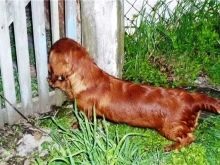
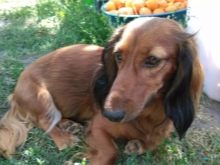
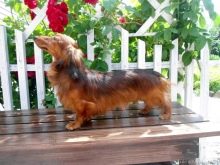
How many years do they live?
The long-haired dachshund's life cycle is largely dependent on care and maintenance. Average rates range from 10 to 15 years. Although some owners claim that their pets lived up to twenty years of age. Dogs that die early in life are likely to have poor genetic inheritance or to contract a disease that did not manifest itself externally.
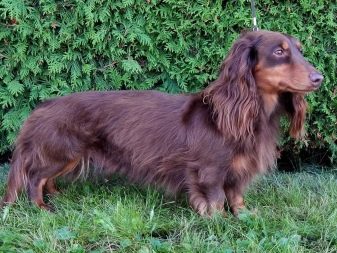
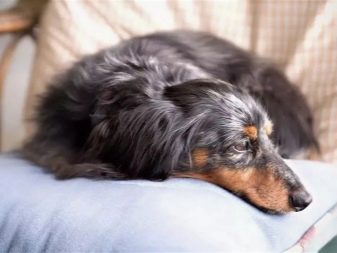
Color variations
Before you begin to deal with color variations, you need to familiarize yourself in more detail with the shaggy variety of dachshunds. In terms of its structure, the hairline of the represented breed is particularly smooth. When exposed to bright rays, a natural shine is visible. Under the main part of the hair there is a small undercoat with a soft structure.Then you can talk about color. Long-haired dachshunds come in a variety of colors.
- Monochrome wool. The hairline can be red, fawn or reddish-yellow. Although the most popular is considered to be a pure color with a slight admixture of black.


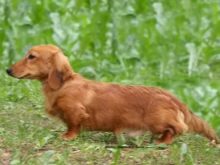
- Two-tone wool. In this case, dark, black and brown shades are characteristic. But in each individual case, small marks of cream and fawn color are visible.
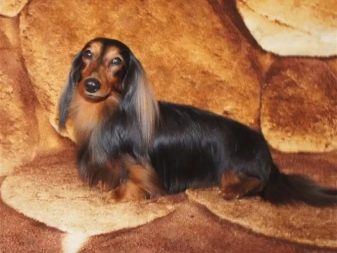
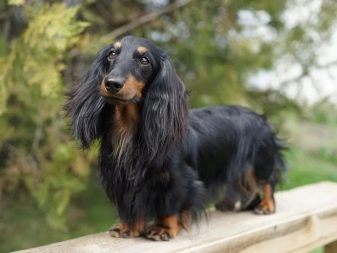
- Marble color of wool... The main hair color can be black, red or gray, over which small spots of a gradient shade are visible.
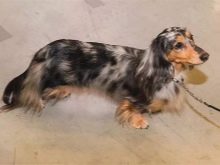
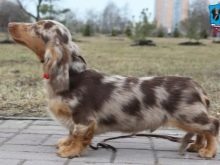
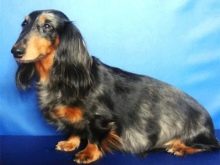
- Tiger color of the coat. In this case, shades of red, fawn and brindle-dark are assumed.
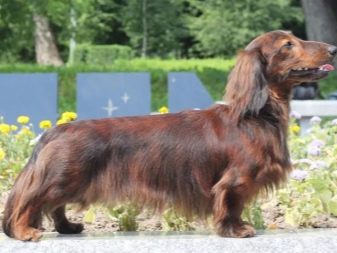
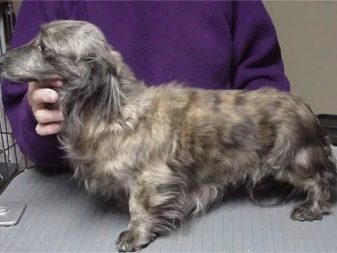
Very rare, but you can still find dachshund with white fur. Usually these are representatives of the shorthaired breed. Despite this, the nose and eyes have a pronounced line of dark colors. According to scientists, albinos are born when dachshunds are crossed with a marbled coat.
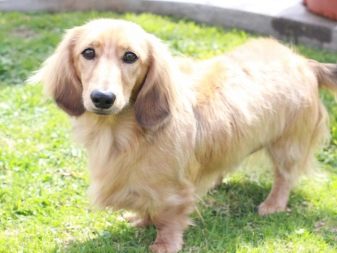
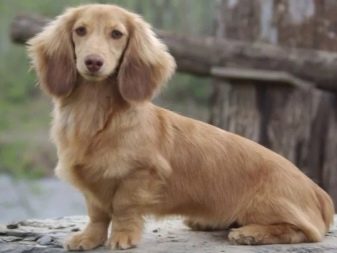
Care features
Grooming is a mystery for most amateur dog breeders, although everyone is familiar with its basics. We are talking about the rules for caring for pets and their appearance. Knowledge of grooming is especially important for owners of long-haired breeds, including dachshunds.
- Bathing... Bath procedures should be carried out only if necessary, but not more than 4 times a year, otherwise the dog's skin may dry out. To bathe a long-haired dachshund, you will need to purchase a special shampoo and balm, thanks to which the fur is easily combed. The first communication of a dog with water should be carried out at the age of six months.

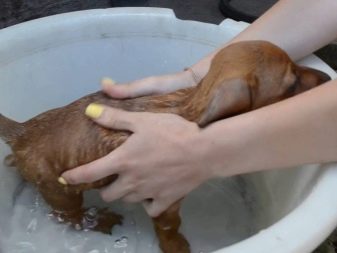
- Combing. Dogs with long hair should be combed several times a week, and daily during molting. To do this, you will need to purchase a special massage brush with sparse teeth.
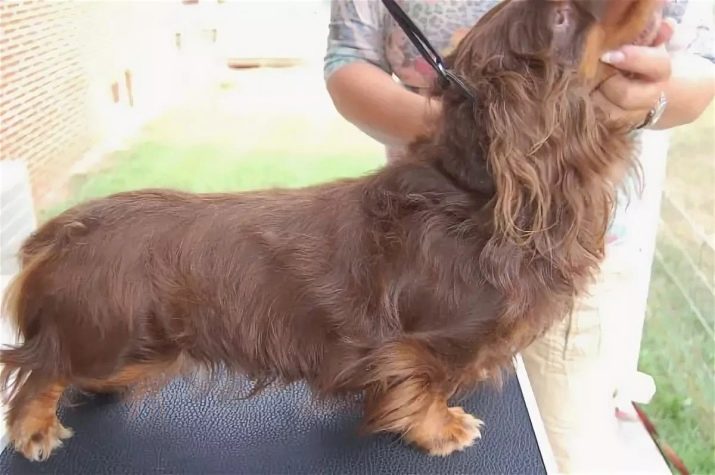
- A haircut. If a long-haired pet participates in exhibitions, the trimming procedure should be entrusted to a professional master, since the applicant's hairstyle must emphasize the breed standard. And to maintain a clean and tidy look, you can do the haircut yourself. Moreover, it will be much more comfortable for the animal. Long hair is an advantage, although there are some drawbacks.
Long and dense wool protects the baby in severe cold, but during the walk the snow accumulates on the tips of the hairs, gathers in lumps. And when it rains, dirt will accumulate on it.
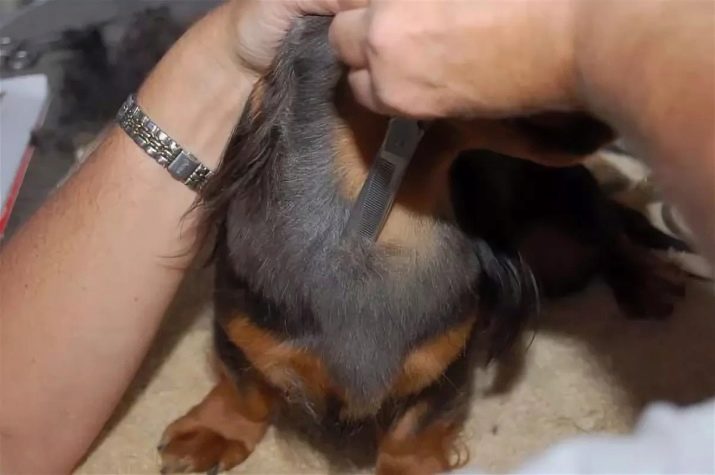
Thanks to the dog's diminutive size and kindness, caring for a dachshund at home is easy. In general, it is assumed that there are standard rules for keeping a pet familiar to everyone. While waiting for a four-legged friend to appear in the house, the newly-made owner needs to buy a sunbed, various toys, a collar, a leash, a toothbrush and toothpaste.
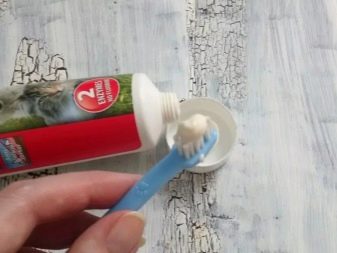
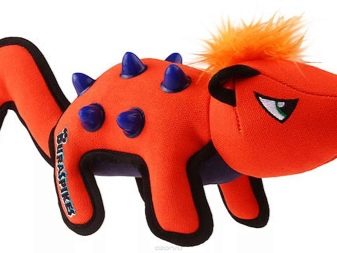

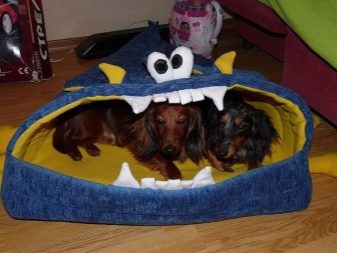
It is enough to take care of your pet's teeth once a week. Thus, the breath is kept fresh and plaque is removed. It should not be forgotten that long-haired dachshunds require special care for their claws. For example, dachshund puppies need to file their claws regularly; in an adult, they grind on the asphalt during walks. It is important to examine the ears of a long-haired beauty daily. If contamination occurs, remove with a cotton pad and vegetable oil.
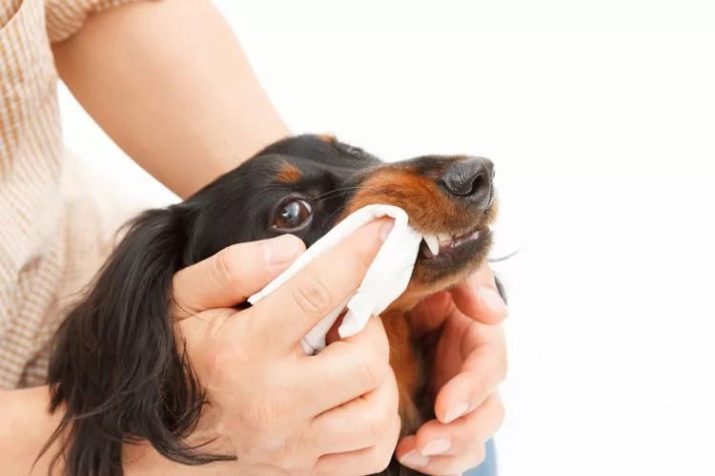
It is necessary to walk the baby twice a day, for two hours. In this case, the dog should show maximum physical activity. Upon returning home, the pet's paws must be wiped or washed. Some owners who are overly fond of their animals purchase overalls for them for the winter. However, in the case of long-haired dachshunds, this clothing option is not ideal. First, the woolen cover deteriorates. Secondly, clothing hinders movement. Thirdly, there is no possibility of natural hardening of the dog.
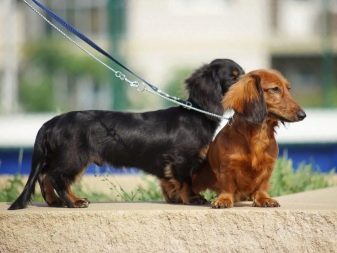
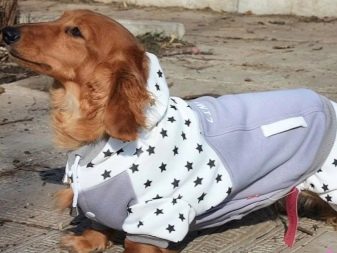
Education and training
The process of raising a dachshund must begin from its very birth. Initially, the mother is engaged in this. Puppies carefully study her habits and try to copy the behavior. At the age of one and a half months, babies begin to wean from their mother, and from that moment on, the owner must begin to train the animal for living in a new house. Before starting training, the baby must learn basic knowledge.
- Nickname. It is important that the animal has its own name from birth. Although most of the new owners are trying to rename the animal or acquire a puppy that does not have a nickname.
- Place command. It is necessary that the puppy has its own separate place for solitude. Otherwise, the baby will climb onto the sofa or bed.
- Command "no"... In this case, prohibitions on begging for food or stealing it from the table are assumed.
- Collar. A small puppy should have its own accessory from the first days of birth. As it grows, the collar will change, and the habit will not disappear.
A puppy should have a variety of toys from birth with which he will have fun. Otherwise, the owner's furniture, shoes and other personal belongings may be damaged.
The breeders, in turn, argue that you cannot immediately give the puppy all the toys, it is necessary to give them to the pet gradually, each time causing the baby a feeling of joy. After a couple of weeks of getting familiar with basic knowledge, the puppies can be prepared for training. It is necessary to acquaint them with street noise, otherwise, finding himself in the space of loud sounds, the baby will be frightened and will not react to the speech of his master.
Trainers claim that Dachshund dogs need to be trained in several commands:
- "Sit";
- "Lie";
- "Nearby";
- "Walk";
- "To me".
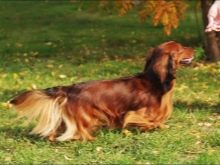

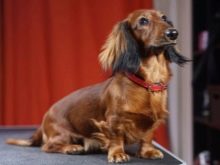
Dachshunds are very intelligent dogs, they are distinguished by their intelligence, which is why it will be possible to teach them a wide variety of tricks.
Feeding
The diet of a dachshund puppy and an adult is very different from each other. At different stages of development, the animal requires certain vitamins. In addition, there is a difference in the number of feedings. For the first month and a half, the puppy receives vitamins and minerals with breast milk. After the baby's diet is supplemented with solid food. When feeding babies, the owner must adhere to special rules.
- The baby's diet should consist of six meals a day with a gradual reduction.
- The puppy must have constant access to water.
- For the first few weeks, solid food must be grated or chopped with a knife so that the baby can chew them with small teeth.
- The baby needs to be fed before the walks, since immediately after the food enters the body, the puppies develop the urge to relieve themselves.
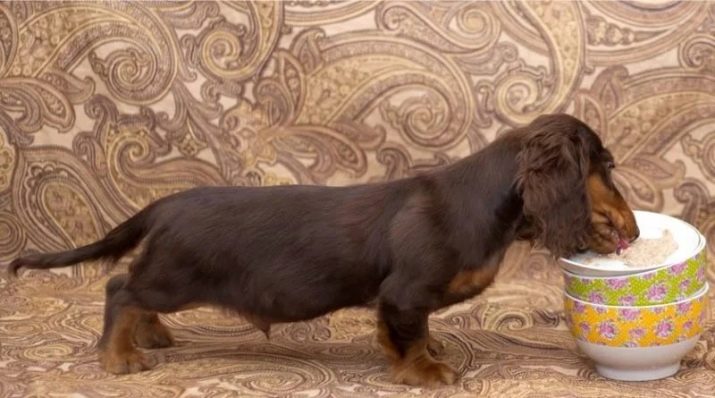
Adult owners will have to choose between natural food or ready-made dry food.
Of course, dry food is quite convenient and easy to use at home. Saves cooking time, and the dog food bag doesn't take up much space. And if you choose a food from the super-premium class, then a dog at any age will receive a full range of vitamins and minerals.
In the case when the breeder has the opportunity to prepare separate meals for his pet, it is best to opt for natural food. The basis of nutrition for an adult with a natural diet is the following products.
- Meat and fish... These foods should make up up to 40% of your dog's daily diet. It is important to boil the food before feeding.
- Cereals. Preferably buckwheat, rice and oatmeal. Semolina, legumes, and wheat grains can cause diarrhea.
- Fresh water. It is very important that the adult has constant access to drink.
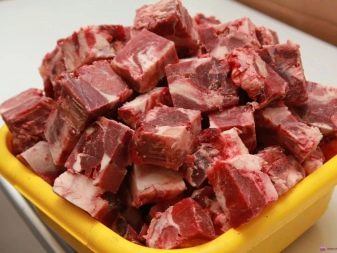



See below for details on keeping long-haired dachshunds.






































